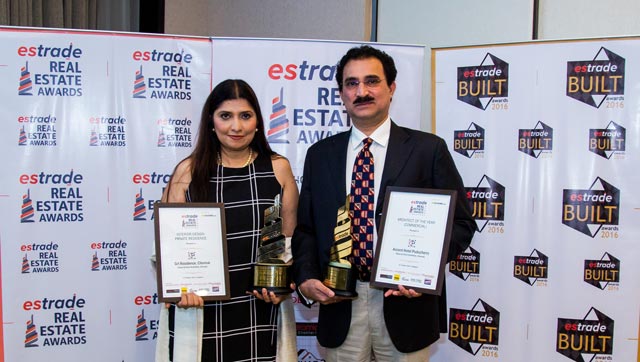

Oscar &Ponni Architects; Architects, Urban Designers, Planners, provide broad based services that address all aspects of Architectural Design including Planning, Project Management, Space Programming and Interior Design.The diversity of experience in the team and its multidisciplinary character is its strength.
- What is your design Philosophy?
Our understanding of architecture and the environment compels us to appreciate and study contextual character, which then influences our design solutions for buildings and places.These are the foundations of our architectural practice. Oscar & Ponni Architects approach is built not on a pre-determined aesthetic or a rigid “signature style.” It grows naturally from a quest for ideas and answers. Designs are never imposed. They evolve from a rigorous inquiry into the particulars of location and program. They represent our determined belief that we can transform problem-solving into art. Our core belief is that architecture and place-making matter, as much today as ever before. We believe that great buildings and spaces can inspire, influence and enhance the lives of their users and the community. At its most basic, architecture is a response to fundamental human needs and a way of organizing space while meeting practical demands. At its most exalted, architecture can introduce new perspectives and new dynamics, reinvigorating both landscape and cityscape. We strive to synthesize these two goals, to create buildings that perform as well as excite, buildings that uplift the spirit and are memorable. At Oscar & Ponni Architects, our design process begins with a careful, in-depth study of each project’s requirements and constraints, its use and users. We then analyze, evaluate, and interpret these factors through the prism of our core principles-the formal propositions of spatial relationships and adjacencies, symmetry and asymmetry, use of exterior and interior materials and sense of order that constitute the discipline and practice of modern architecture. With this inquiry and understanding as a starting point, we build a rationale of ideas and experiences, a program of needs and goals, and a carefully constructed collage of forms and spaces that is at once dynamic, aspiring, and meaningful.
- Who inspires you?
“Context comes from the Latin contexere meaning to weave together, to join together or to compose. The context is the interconnected whole that gives meaning to the parts.”
Contextual Architecture is an architecture whose design inspiration comes from acknowledging not only the immediate, but the larger context of the building. Oscar & Ponni Architects practices in a manner that incorporates the context of the building into the design in a very substantial way. Our buildings are never decorated to fit into their settings. There is always an overall integrity in the relationship between functional, programmatic, environmental and contextual needs. Along with strong conceptual and historical awareness, nature’s forms and shapes appear as a recurrent source of inspiration for Oscar & Ponni Architecture and Interior Design. It includes attention to physical contexts and landscapes and fine detailing.
“Architecture can introduce new perspectives and new dynamics, reinvigorating both landscape and cityscape”

- How have the new technologies affected an Architect’s thinking process? How have they impacted procedural architecture?
We used to start working with a sketch in a sketch book or tracing paper, a model, free hand 3d views or a model cross-section. With digital and visual technology, the skill base has changed.We believe architecture’s in a great place at the moment and communication is faster than ever – it’s really creating an awareness and thoughtfulness on the part of architects everywhere. Wherever we travel we get updates on our design projects, site works, and any queries through whatsapp and emails. There’s a search for what’s meaningful and appropriate to the place, and for the most straightforward, simplest way to express architectural ideas.
- Are you concerned about environmental and social sustainability in your buildings? If so, what role does green building play into your work?
The 21st century presents us with one third of the earth already developed, much of it in sprawling waste. A fundamental change of attitude, a re-visioning of values must take place. We emphasize sustainable building and site development as fundamental to innovative and imaginative design. To create sustainability in a community, architects need to integrate the concept of sustainable community development in their actions both as citizens and professionals. While the role of architects as professionals can be defined as a process to preserve, improve and create the required quality of built environment under the particular condition of each community, in an ideal and sustainable world their role as citizens should be to become sustainable members of their own community.
“There’s a search for what’s meaningful and appropriate to the place, and for the most straightforward, simplest way to express architectural ideas”
- Can you tell us about any projects you are currently working on that you are especially excited about?
There are many exciting projects underway at Oscar & Ponni Architects, ranging from lively public spaces, educational, hospitality to comfortable private havens and residential townships and communities. With a focus on public good and a dedication to “design for life,” we hope to cultivate a lasting impact from project start to project finish. Our goal is to enrich the environment and foster community by establishing spaces that are functional, innovative, and organic.
- What is your ultimate goal when it comes to your work? What do you want to be remembered for?
We look forward to some fantastic, dramatic big new buildings and social projects. Ambitious cities are good for architects, but what about how people actually live? We must shift architecture towards a humane socio-economic approach, and a human scale. The architectural profession continuously plays a pivotal role in the development of sustainable solutions to the built environment all over the world. The architect’s multidisciplinary skills and ability to apply a holistic view is vital to tackling the extensive climate change challenges. In 2016 this will be even more evident. Secondly, architects know better that anyone how projects involve a process. Today we experience a rising acknowledgement of the advantages in user involvement. By involving various user groups in the development and design process of for instance new public buildings, the local community and end-users will bring new ideas and insightful knowledge into the project, and innovative solutions come to life. This forms the important basis of the social dimension in architecture, it is our hope that this tendency will increase in the years to come. Thirdly, architects provide excellent and functional solutions every day all over the world. However, we should never neglect the artistic and qualitative virtues of architecture. Think about it, architecture frames the life of human beings. In 2016 we are looking forward to the birth of new courageous architecture that will capture and reflect the human and social thoughts and values of our age.
“Our goal is to enrich the environment and foster community by establishing spaces that are functional, innovative, and organic”
- What advice would you give to young designers starting out today?
My best advice for someone starting a practice is to find a place that you like and stay. Everything else will work itself out. As we did, you can overcome the lack of connections and people you know. Those come naturally with time. Work hard, have the endurance to do the best design work, but service your clients with the same enthusiasm and dedication. The service you provide, in most cases outweighs the design you create. Focus on a particular type of work, be it housing, commercial interiors, educational facilities, etc. But most of all: be patient! The practice of architecture takes time and it is very difficult to be successful on a large scale without first being successful at smaller scales. Small victories eventually lead to bigger opportunities.
- How IT & IT solutions enhance value in design of living spaces?
Most stages of architectural practice utilize the computer for increased accuracy and speed. Architects create presentations, 2-D construction documents and 3-D models in addition to typical business documents on the computer. Computers aid design understanding and implementation of complex structures through computer-solved equations and information generation.
Building information modeling (BIM) has become the tool of choice for many architects. However, many firms continue to miss out on the technology’s capabilities by using it purely as a production tool and building 3D models solely to create 2D documents, much like they did with their CAD software.
Whereas CAD is largely hand drafting on a computer, BIM is much more than the next generation of CAD. It is a tool for the digital age, both a framework and a methodology with a database at its core. As elements are created in a building model, their position and properties are stored in a structured data repository that becomes a treasure trove for the resourceful architect. Also there are plenty of 3d visualization software’s available in today’s market.
Designs are never imposed: Oscar &Ponni Architects





